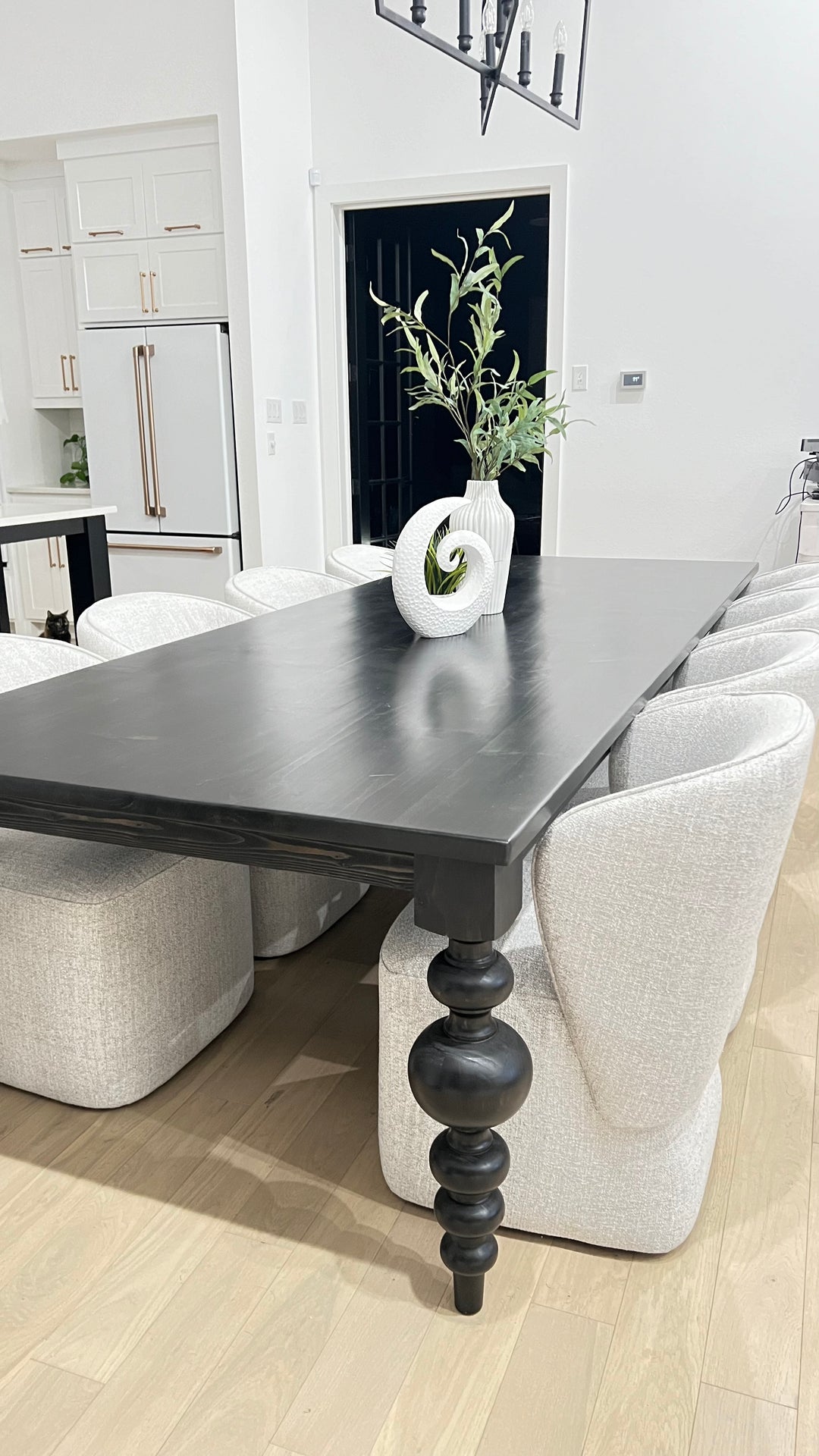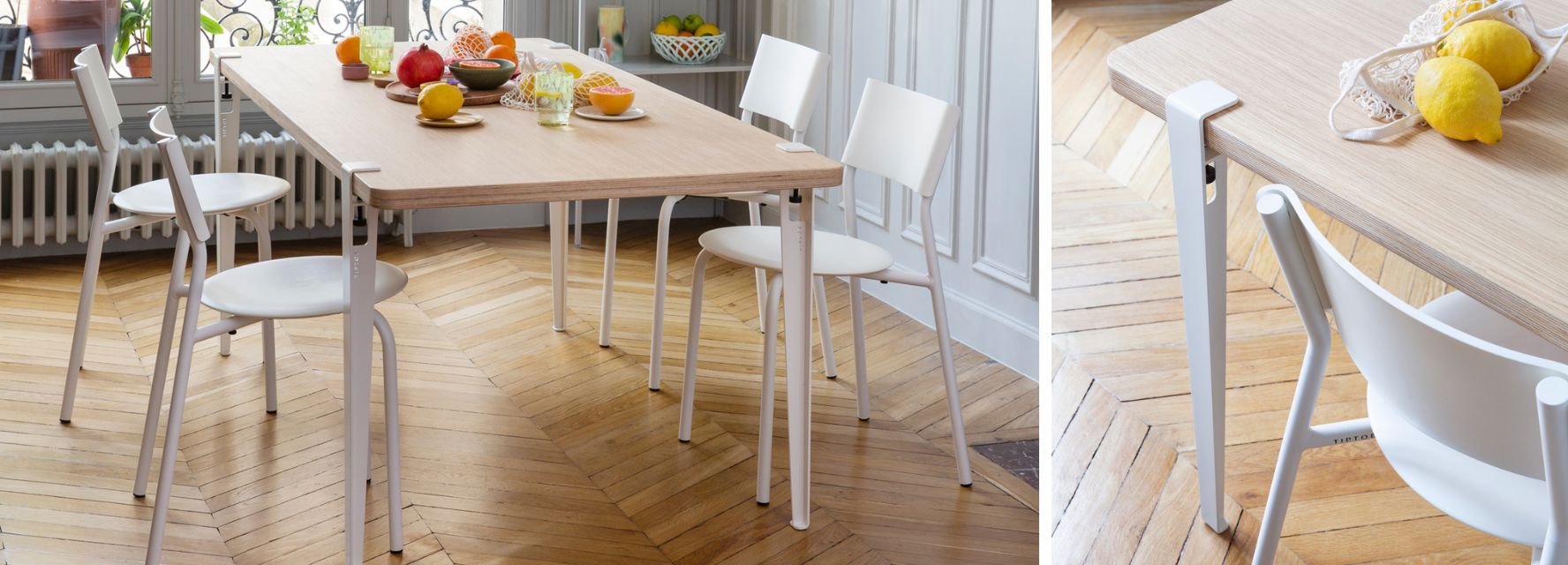Dining Room Table Legs: A Guide to Selecting the Right Style for Your Home
Dining Room Table Legs: A Guide to Selecting the Right Style for Your Home
Blog Article
Expert Tips for Setting Up Eating Area Table Legs for Optimum Stability
When it comes to installing eating space table legs, achieving maximum security is critical for both functionality and aesthetics. What particular strategies can improve security also further?
Select the Right Legs
When choosing the ideal legs for your dining-room table, it is essential to take into consideration both capability and visual appeals. The legs you select will dramatically affect the overall design and stability of the table. Review the table's planned usage; if you anticipate constant gatherings, stronger legs, such as those made from strong timber or steel, might be a lot more ideal, as they supply increased toughness and support.
Following, take into consideration the elevation and design of the legs in connection to the table top. Common table generally range from 28 to 30 inches in height, so make sure the legs align with this standard for convenience. The design of the legs need to match the layout of the table top-- whether it be modern, rustic, or conventional. Tapered legs can add a contemporary touch, while turned legs could share a much more timeless visual.

Select Appropriate Equipment
How can the ideal equipment improve the security and durability of your eating area table? The option of proper equipment is essential to making sure that the legs of your table are safely affixed and able to hold up against regular usage. Premium screws, bolts, and brackets supply the required toughness to sustain the weight of the table, along with any type of extra loads positioned upon it throughout dishes or gatherings.
When selecting screws, choose for those made from resilient products such as stainless steel or brass, which withstand deterioration and preserve stability with time. The length of the screws is equally vital; they ought to pass through deeply right into the table's framework without endangering integrity. For bolted links, take into consideration utilizing lock washing machines to stop loosening as a result of resonance or activity.
Furthermore, using corner braces can include additional support, particularly for larger tables or those with much heavier tops. These braces disperse weight uniformly and aid maintain the table's form. Making certain that the hardware you pick is appropriate for the details products of your table will certainly additionally improve its general security and longevity, allowing you to enjoy your eating experience for several years to find.
Ensure Appropriate Positioning
Proper placement of eating area table legs is vital for both visual appeal and practical stability. To attain optimal positioning, begin by measuring the distance from the table's corners to the leg accessory points.
Use a degree throughout setup to verify that each leg is perpendicular to the table top. This action is important, as even minor disparities can intensify right into considerable stability problems with time. It is a good idea to note the preferred leg settings on the bottom of the table with a pencil or concealing tape prior to safeguarding them. This method works as a visual guide, enabling for changes as required.
In addition, ascertain the alignment after the first screws are tightened up, as adjustments might be required prior to totally protecting the hardware. By prioritizing proper positioning, you not only enhance the table's general design but also ensure that it stays stable and functional for years ahead.

Consider Weight Distribution
After making certain appropriate positioning of the eating space table legs, it's essential to consider weight circulation to boost security and performance. dining room table legs. Proper weight circulation is essential in avoiding wobbling and making sure that the table can sustain its intended tons without threat of tipping or collapsing
When positioning the legs, guarantee they are put at equivalent ranges from the facility of the table to evenly distribute the weight throughout the structure. Consider the weight of the table top and any things that will frequently hinge on it, such as attractive pieces or tabletop home appliances. Tables with larger surfaces must ideally have legs positioned closer to the edges, as this maximizes the base of support and decreases the danger of instability.
Additionally, if the table is meant for usage in a high-traffic area, think about using much heavier products for the legs or adding stabilizing components, such as cross-bracing or a lower rack - dining room table legs. These changes can help preserve equilibrium and protect against shifting during use. Inevitably, a well-considered weight distribution technique will significantly improve the table's total performance, ensuring it stays a useful and appealing centerpiece for your dining room
Test Security Prior To Usage
Examining the stability of the dining-room table prior to usage is a vital step that must not be neglected. Ensuring that the table is secure and protected can protect against crashes and extend the life expectancy of the furnishings. Begin by applying gentle pressure to various points on the table surface area. Lower on the center and after that along the sides, observing any kind of wobbling or changing. Recognize the legs or joints that may call for change. if the table reveals instability.
Next, inspect that all screws and fasteners are tightened appropriately. Loose links can bring about instability and prospective damages over time. If essential, utilize wood adhesive on joints to boost security, making certain to permit appropriate drying time.

Verdict
To conclude, the setup of eating area table why not try these out legs calls for mindful factor to consider of materials, positioning, hardware, and weight circulation to linked here accomplish maximum security. By picking tough legs and high-grade bolts, making certain exact placement, and distributing weight equally, the architectural honesty of the table can be substantially boosted. Carrying out a security test before routine usage even more guarantees that the table will withstand daily pressures, consequently providing a safe and dependable eating experience.
When it comes to mounting eating space table legs, accomplishing optimum security click to investigate is critical for both capability and looks. The legs you select will significantly affect the total design and stability of the table (dining room table legs). Standard eating tables generally range from 28 to 30 inches in elevation, so make certain the legs straighten with this standard for comfort.Proper alignment of dining room table legs is important for both visual charm and practical stability.In final thought, the setup of dining room table legs calls for mindful consideration of materials, weight, alignment, and equipment distribution to accomplish maximum security
Report this page